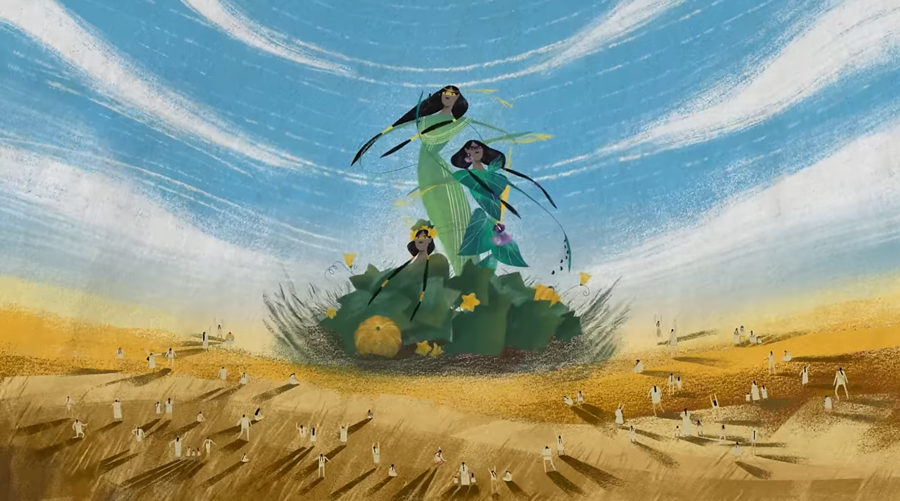The Journey of Chief Handsome Lake and the Revival of the Nearly Forgotten Three Sisters

Share
Chief Handsome Lake, a respected Seneca (Onondowahgah) leader, experienced a profound spiritual awakening during a difficult period in his life. He fell gravely ill, and while in a delirious state, he had a vision. In this vision, he encountered three beings known as the “Three Sisters.” These spiritual entities shared sacred teachings with Handsome Lake, guiding him toward a path of renewal and healing for his people.

https://youtu.be/pFRXY8bV_ug
This TED-Ed video, written by Rebecca Webster and directed by Luisa Holanda, tells the story of Chief Handsome Lake and how the Three Sisters—corn, beans, and squash—survived the hardships of colonialism and cultural disruption. But who are these three wise women?
In traditional Native American agriculture, the “Three Sisters” refer to the crops of corn, beans, and squash. These plants are grown together in a way that benefits each other. Corn provides a natural support for the beans to climb, the beans add nitrogen to the soil, enriching it for all three crops, and the squash vines spread across the ground, suppressing weeds and keeping the soil moist with their broad leaves.

This farming method not only provided a nutritious and reliable food source for the Haudenosaunee communities but also exemplified sustainable agriculture long before it became a modern buzzword.
The Three Sisters are a prime example of regenerative agriculture—a practice rooted in ancient traditions that sees nature as a dynamic, interconnected system. By embracing regenerative principles, we can work with the land to produce food while honoring the wisdom of those who preserved these transformative traditions.
Today, challenges like soil degradation, water scarcity, and loss of biodiversity make it more urgent than ever to adopt regenerative farming practices. The wisdom of the Haudenosaunee, embodied in the story of the Three Sisters, offers valuable lessons on how we can reshape our agricultural systems to harmonize with nature and help heal the planet.

The TED-Ed video also highlights the importance of passing down this knowledge to younger generations. The Haudenosaunee, also known as the “people of the longhouse,” have often been referred to as the Iroquois nation—a name derived from a French variation of a term meaning “snake,” which many consider derogatory. Through education and storytelling, we can ensure that the rich cultural heritage of the Haudenosaunee continues to inspire and guide future generations.
Category: Native American Culture, Sustainable Agriculture, Environmental Wisdom
